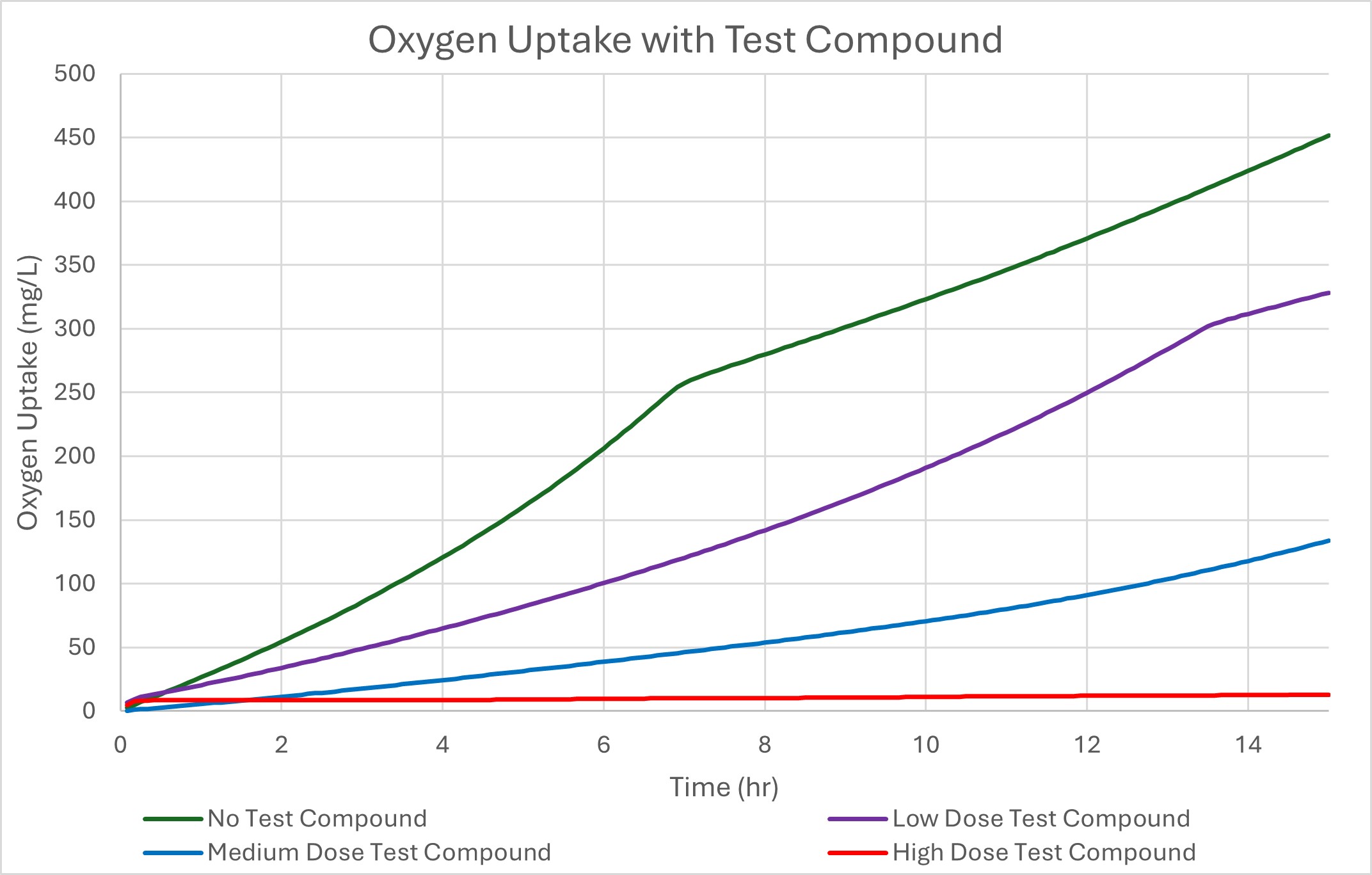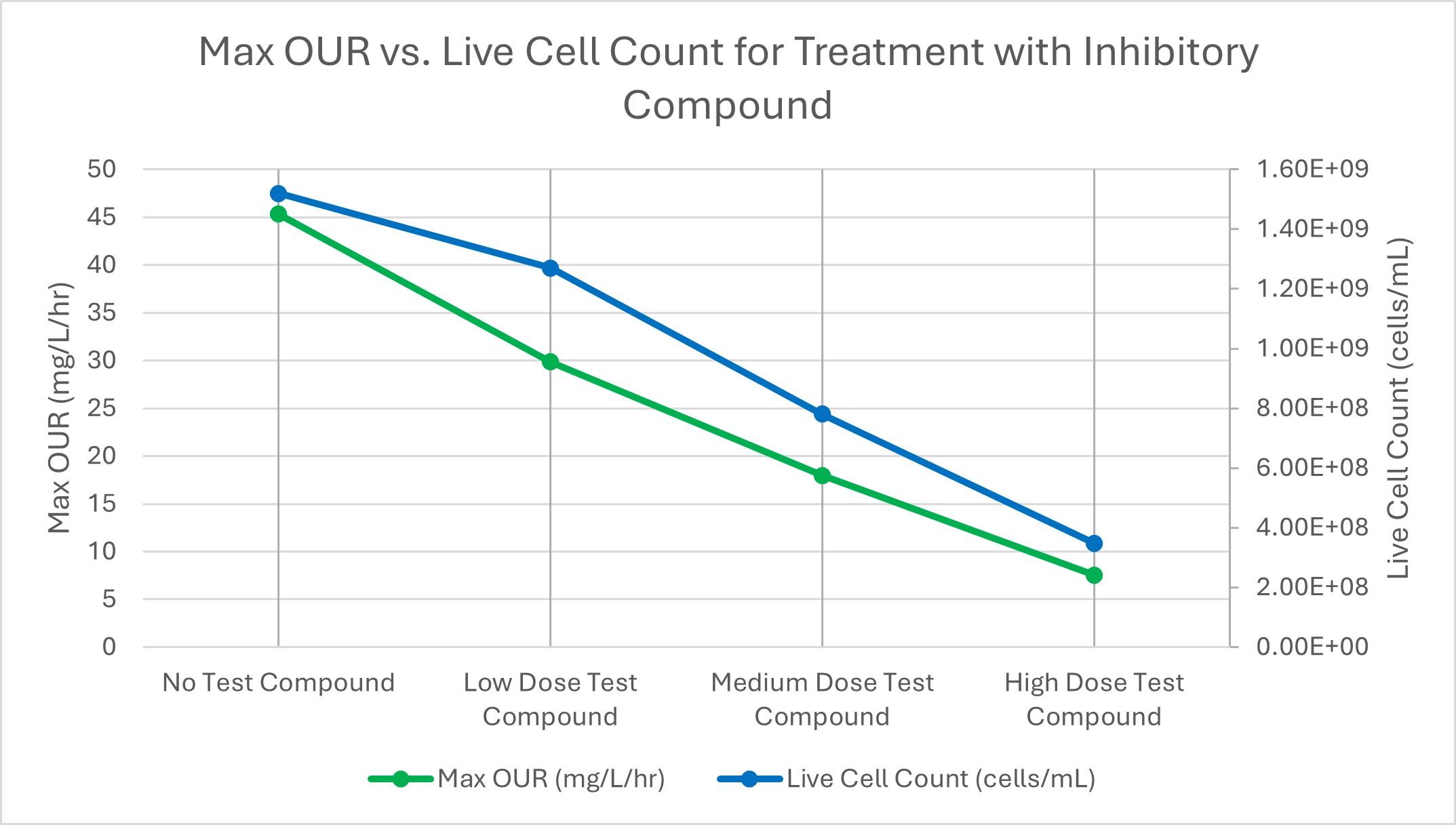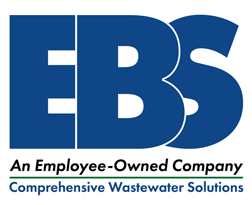Assessing Chemical Impacts on Wastewater Microbiology
Wastewater managers and operators want confidence that their facility’s chemical program will not negatively impact their biological treatment system. Whether you are a chemical supplier or product end user, EBS can assess chemical additives for impacts on microbiological activity.
Utilizing respirometry, EBS can continuously measure oxygen uptake or gas production, and therefore BOD removal, from a biomass exposed to different controlled conditions. To complement these results, we can also use Flow Cytometry, which measures the proportion of live and dead cells in each sample using nucleic acid stains. This dual approach provides both a metabolic and cellular view of microbial health under chemical stress.
In the case study below, three different doses of biocide used in upstream processes were added into reactor bottles containing the facility’s activated sludge biomass and typical influent at three different concentrations, in addition to the treatment plant biomass and aeration basin influent.

Figure 1
A control bottle, containing only biomass and influent without biocide, was used to establish baseline activity. All three doses of biocide reduced the oxygen uptake of the biomass compared to the control. As expected, the higher the biocide dose, the more reduction in microbial activity that was measured.

Figure 2
Flow cytometry analysis of live and dead cells in each reactor bottle showed that the toxic nature of the biocide reducing the number of live cells was the cause of the reduction in oxygen uptake and therefore BOD removal.
How can EBS help assess your wastewater program?
We can provide follow-up studies to determine potential pre-treatment strategies for toxic or inhibitory products, safe feed rates for products that only show inhibition at higher concentrations, and/or the ability for a biomass to acclimate to a product and reduce its effective toxicity. Our experienced treatability laboratory can help facilities to determine how to safely treat chemical additives while keeping their bacteria alive, healthy, and active.
